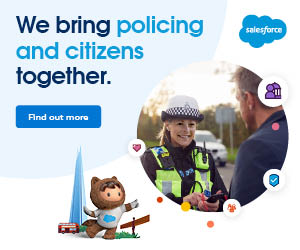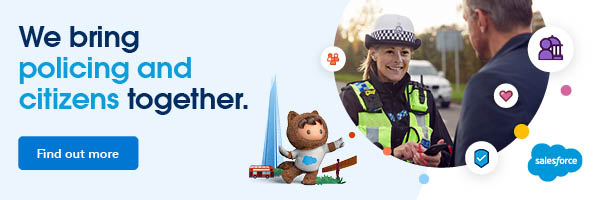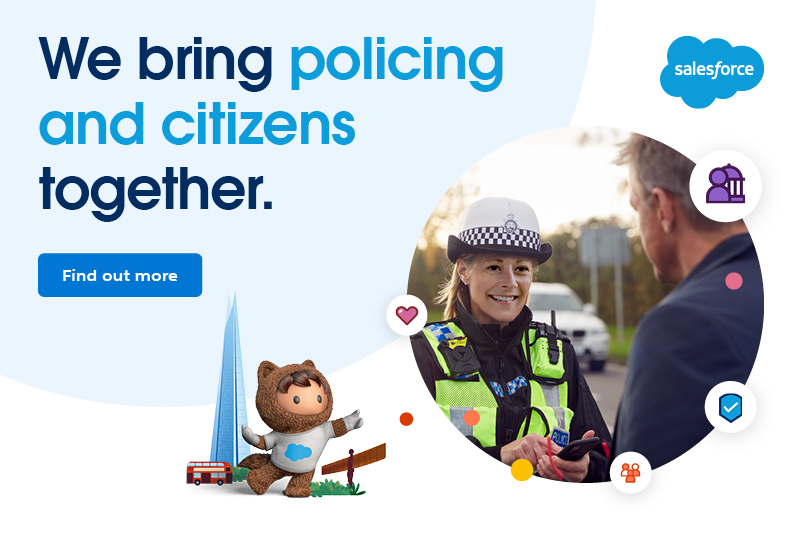In March, Salesforce hosted the Cityforum event ‘Transforming Police Public Contact’ to explore how policing and industry can collaborate to drive innovation in public engagement.
The event centered around the new National Contact Management Strategy, which is built on three key principles:
- Ensuring service is public focused
- Effective channel management
- Prioritisation of contact
This article will focus on these principles, the context of Contact Management, and strategies to break the cycle of demand using insights from our work with Police Forces and the delivery of our Victim Journey and Citizen Portal capabilities.
PEEL Inspections
At the time of writing, there have been 13 PEEL inspections providing a traffic light system representation of the assessment of Outstanding (Dark Green), Good (Green), Adequate (Amber), Requires Improvement (Red) and Inadequate (Dark Red).
In the context of the event that talked about ‘Transforming Police Public Contact,’ there are 3 categories that relate to the 3 principles of Responding to the Public, Protecting Vulnerable People and Providing a Service to the Victims of Crime. I like to align a 4th category of PEEL inspection with the previous 3 which is Building, Supporting and Protecting the Workforce as this category relates to the wellbeing of a forces employees, again through the lens of Contact Management.
The demand on Police Forces is outstripping capacity and is expected to keep rising, making Responding to the Public the worst-performing area.
For Responding to the Public, out of 14 inspected forces, 5 were Adequate, 4 Inadequate, and 5 Requires Improvement. Protecting Vulnerable People showed 2 Good, 4 Adequate, 2 Inadequate, and 6 Requires Improvement. Providing a Service to the Victims of Crime was ungraded but inspected for all forces.
The demand on Police Forces is outstripping capacity and is expected to keep rising, making Responding to the Public the worst-performing area. The current 999 ‘league table’ for Police Forces is published on Police.UK and shows performance for 999 calls from March 2024 on 4 criteria: total calls unrounded, mean answer time, median answer time and percentage of calls answered in under 10 seconds/total calls answered in under 10 seconds. At the event, Lee Freeman KPM (HM Inspector of Constabulary and HM Inspector of Fire & Rescue Services) spoke about the changing landscape of inspections and the inclusion of 101 call answering time in the future which led me to think about how else the PEEL inspection framework will develop. The Victims Code of Practice (VCOP) established minimum standards on the rights, support and protection of victims of crime and is approaching its 3rd reading in the House of Lords before Royal Assent.
This code of practice is not new to policing but it will reinforce how victims of crime are managed and introduce a senior responsible person who will be answerable for a forces adherence to the code of conduct being provided as a service.
This may also become a PEEL inspection topic as the framework is covered today but without the means of measurement; assessing a force’s compliance with the 12 victims rights for each victim of crime would be a transparent way of working.
Increasing demand
Technology was a significant topic at the event, highlighting the contrast between Enterprise contact centers and Police Contact Management.
In some enterprises, a human-answered call signals a technology failure. Why invest money in portals with AI, chatbots and multi-channel engagement capabilities (such as diverting a caller into a WhatsApp conversation)? If an enquiry can be serviced using automation, knowledge-based articles or multi-channel engagement it relies on fewer people, thus reducing cost.
In policing, there must always be a way to speak to a call handler as one size does not fit all.
One size does not fit all
Are you a Baby Boomer, Gen X, Millennial, or Gen Z?
This worked for me as a ‘Gen X’ and comfortable with major tech channels but this isn’t the case for everyone. I wonder how this service would have been delivered or received by a Baby Boomer?
Our age often influences how we prefer to engage with both private and public sector organisations. The changing demands of the public and the way service is evolving determine how we can engage with service providers. Creating a new digital channel does not necessarily lead to effective channel shift; it can often flood the channel with repeated demands.
Ensuring service is public focused is measured by outcomes being delivered.
I recently engaged with a service provider who asked me to continue a conversation on WhatsApp. It moved my call initially to a bot that qualified what my query was about and then connected me to an agent who dealt with my contract renewal. This worked for me as a ‘Gen X’ and comfortable with major tech channels but this isn’t the case for everyone. I wonder how this service would have been delivered or received by a Baby Boomer?
Two Salesforce customers recently enabled 2-way communication between a victim of crime and an Officer in Case (OiC). These messages are initiated by the OiC completing their updates in the usual way by updating the Occurance Enquiry Line in the RMS. This generates a message to the victim and time and date stamps it in the RMS. A victim can then respond directly to the OiC via the portal which is also time and date-stamped for audit purposes. When this service was switched on it saw the first message generated within 2 minutes. The data is currently being collated to understand trends.

Control room discovery sessions
As a Police Team, we have conducted 2K+ hours of discovery work over the last 2 years. We have understood the different approaches to contact with the use of switchboards to triage calls, IVRs to direct calls and callback services to save callers waiting to speak to someone. All of them have their benefits and drawbacks and it’s interesting to see what technology is in place across policing.
Consolidating separate silos of information into a single view of data presents a contextual picture of the caller and offers insights that will currently take a call handler valuable time to determine when receiving a call.
All forces struggle with effective channel management as they are typically new types of service that are added to existing technology without any integration. Chatbots, Live Chat and Social Media capabilities are all useful channels to engage with the public but these are ineffective channels unless they can relieve the demand burden and offer insights into who it is that is contacting a force. We have seen datasets for 3 or 4 applications that support these channels which leads to duplication and inconsistent information about incoming demand.
An integration strategy is the most important investment of time linked if forces are determined to create effective means of communication with the public that alleviate failure demand and improve outcomes.
Consolidating separate silos of information into a single view of data presents a contextual picture of the caller and offers insights that will currently take a call handler valuable time to determine when receiving a call. A key point here is that you do not need everything in a data lake to achieve this. You can often leave the data where it is and extract key data points to drive engagement and better outcomes.

Vulnerable and repeat callers are identified from the outset of the contact and prioritised where appropriate.
The ability to automate the THRIVE rationale saves valuable time for a call handler, allowing them to focus on the conversation and offers a more personalised service and consistency of approach. Add to this the ability to auto-RETHRIVE throughout the life of the incident log where there are delays in deployment or a change of circumstances and this creates much needed capacity allowing police officers and staff in the control room and beyond to focus on other tasks at a time where demand is increasing and resourcing is challenging. At any point the automated THRIVE can be over-ridden by the call handler if necessary.
CRM in contact
Integrating data and applications used in a Control Room is key to gaining richer insights about callers. Despite being data-rich, policing often lacks actionable insights because most current systems do not consolidate information for incoming calls.
Salesforce has observed a growing trend towards adopting CRM systems for Control Rooms, as many forces are specifying this need when reviewing their current and future operations.
Salesforce has observed a growing trend towards adopting CRM systems for Control Rooms, as many forces are specifying this need when reviewing their current and future operations. The advantages of a single screen displaying contextual information about a caller are significant. Integrating this data with a telephony platform enhances these benefits even further. The CRM component consolidates information from the RMS, CAD, social media, chatbots, and national systems like Single Online Home. These data feeds enable a 360-degree view of the caller, eliminating the need to leave a screen or double-key any data.
We recently hosted a Police Innovation Tour meeting at Salesforce Tower in London, where we showcased these capabilities as an end-to-end journey. With AI integrated into all Salesforce capabilities, we demonstrated the ability to automatically transcribe calls, allowing call handlers to focus on the conversation while the technology operates in the background. A ‘human in the loop’ reviews and approves the transcription before it is saved, ensuring users control the final data entry. This entry-level AI capability is just the beginning, with additional options available to further save time and enhance efficiency.
Summary
Salesforce supports the new strategy launched at the March event. We believe we can help enhance citizen services, reduce manual re-keying of information, improve operational efficiency, and decrease demand on Control Rooms. We have been collaborating with Humberside Police, Thames Valley Police, and Hampshire & IoW Constabulary for over 12 months. The results we presented on June 5th show reduced call volumes and increased satisfaction. Our capabilities provide an initial step in the Victim Journey, allowing customers to add a Citizen Portal for self-service via a web portal with the appropriate security credentials.
Additionally, the customers are trialling further modules focused on Victim & Witness Care ahead of the broader adoption of CRM in Control Rooms.

We would be delighted to share the insights we have gathered over the past 18 months so please feel free to get in touch with us for a conversation.
Make sure to also visit our website to learn more about how Salesforce is transforming citizen engagement in Policing.



